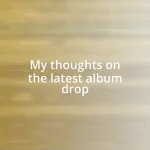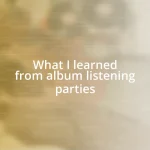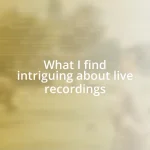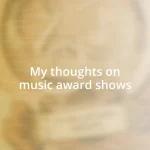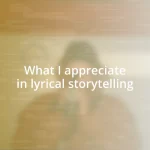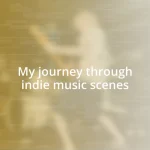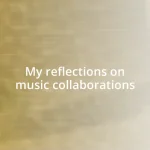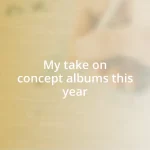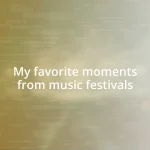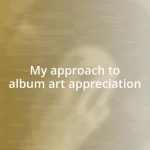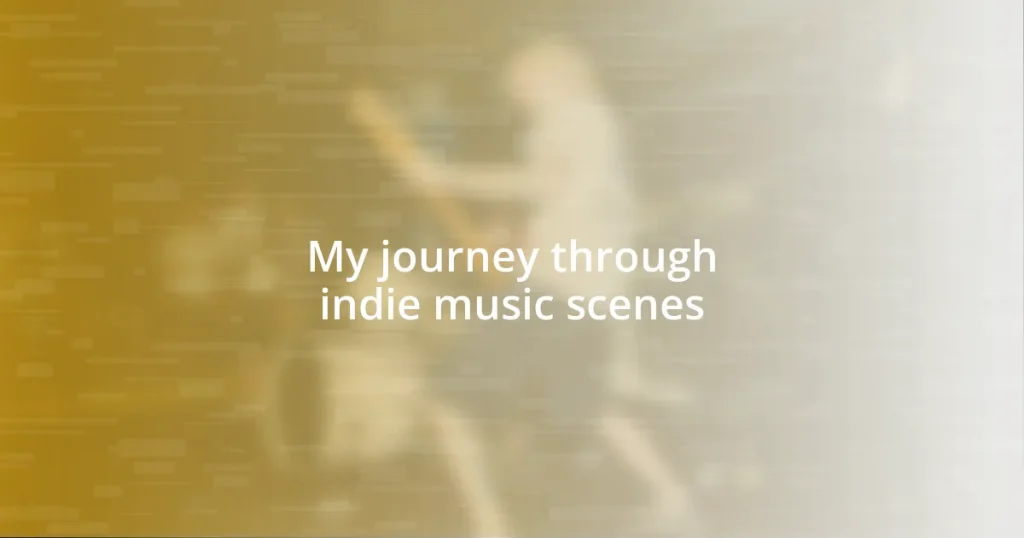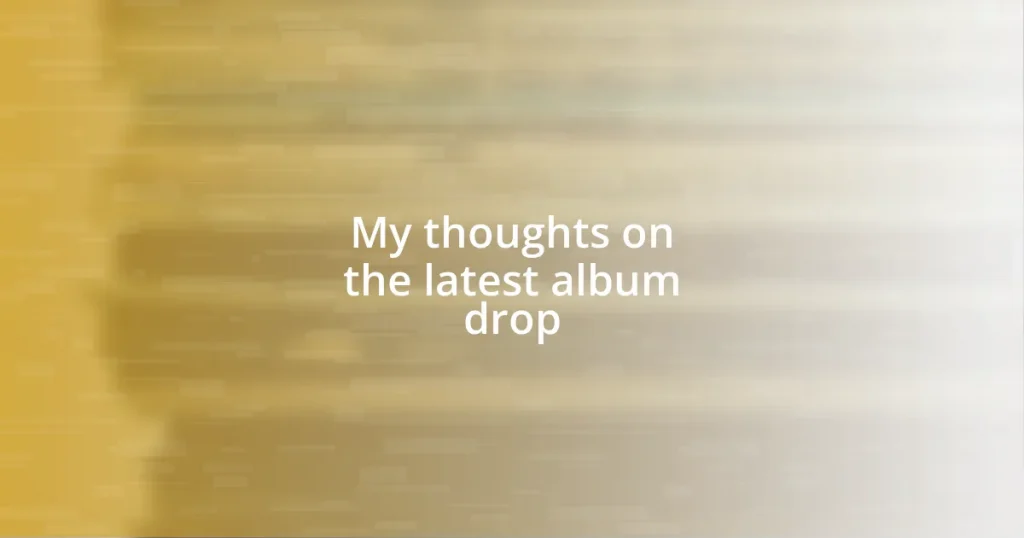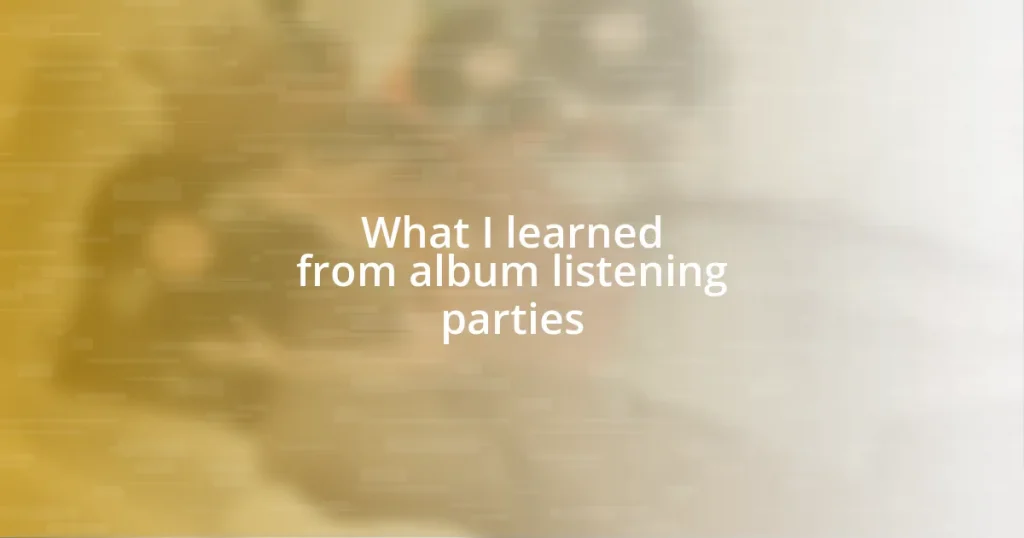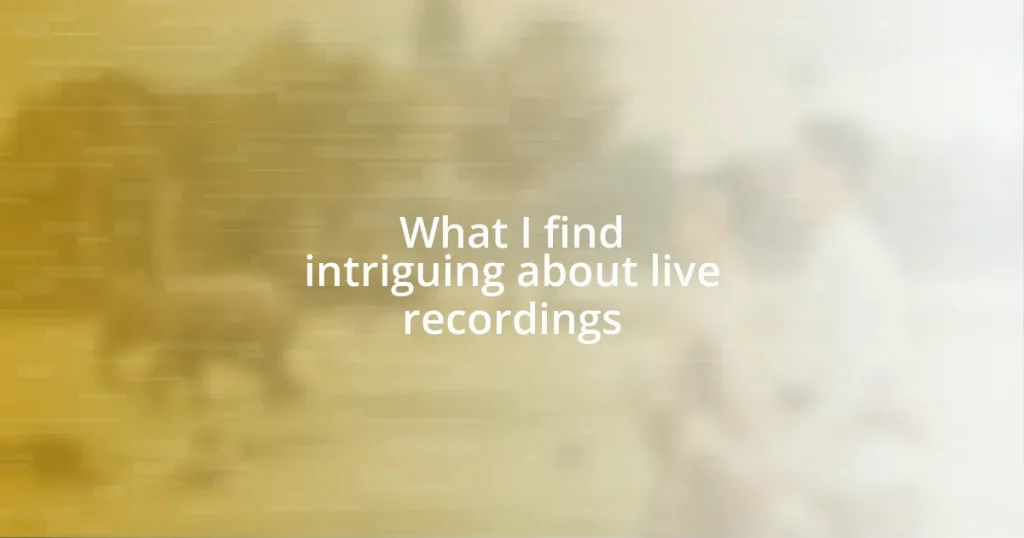Key takeaways:
- Indie music thrives on a DIY ethos, emphasizing independence and personal connections between artists and fans.
- Local indie venues create intimate environments that foster direct engagement and shared experiences between musicians and audiences.
- Building relationships with local artists enhances community support and collaboration, enriching the indie music scene.
- Online platforms and social media are vital for discovering new talent and fostering connections among fans and musicians.
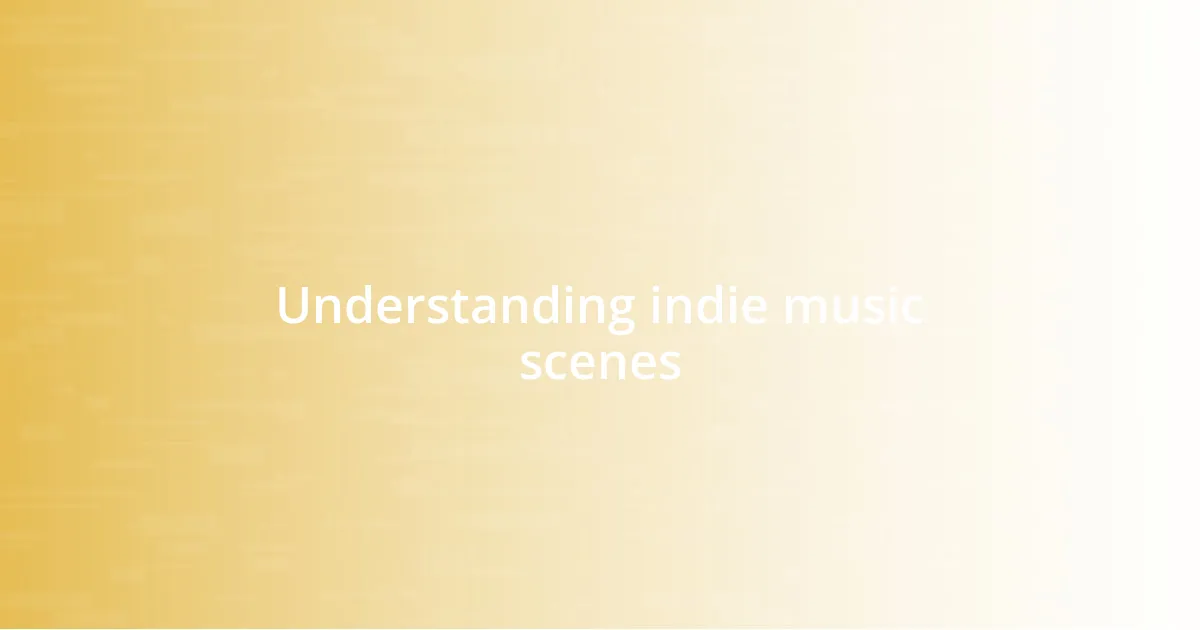
Understanding indie music scenes
Indie music scenes are fascinating microcosms where creativity flourishes outside the mainstream. I remember the first time I stumbled into a cramped venue, where the energy of the crowd pulsed in perfect sync with the raw, unfiltered sound of a local band. It struck me then—how can something so genuine and unscripted resonate deeply with people?
In these scenes, every city has its own unique vibe, shaped by the artists and their communities. I’ve often wondered, what makes a scene truly special? For me, it’s the connections between musicians and fans, where you can feel the passion in the room as they share their stories through music. Each note and lyric seems to carry the weight of their experiences, forging a bond that’s hard to replicate elsewhere.
The DIY ethos is at the heart of indie music, encouraging artists to take control of their work. I had a moment of clarity at a local festival, where I chatted with a musician who self-produced their album. Their pride and determination were palpable, making me think about how empowering it is to create something authentic and personal, without relying on big labels. Isn’t that what art should be about?
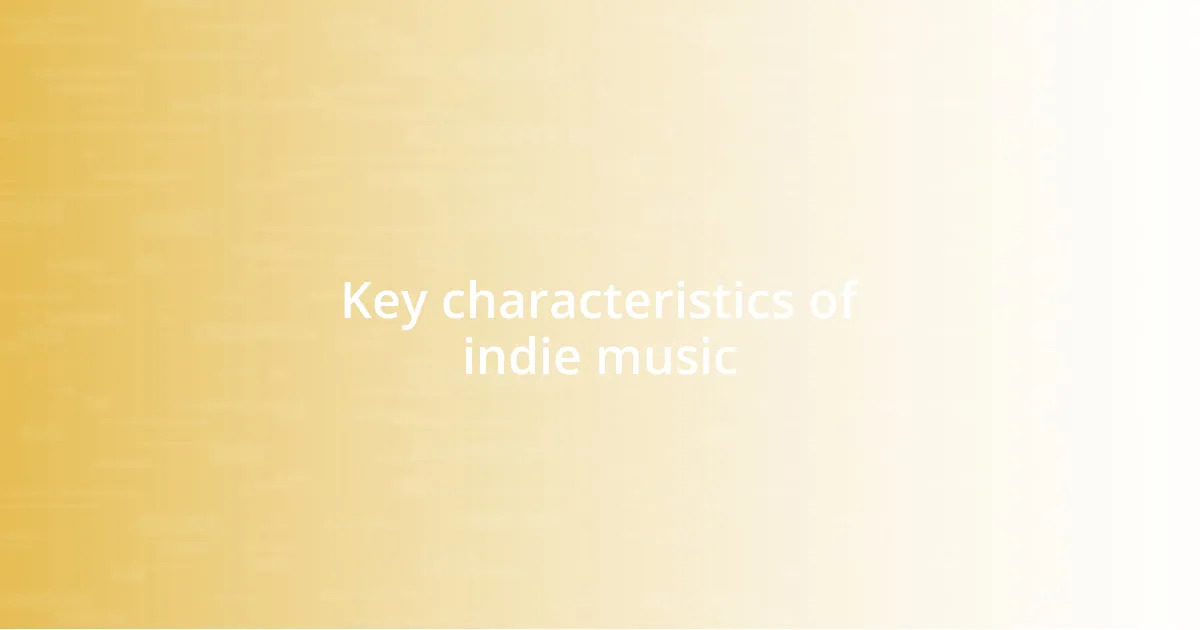
Key characteristics of indie music
Indie music is characterized by a strong sense of independence and authenticity, often reflected in its DIY approach. Artists take the reins of their creative processes, from writing to recording and promoting their music. I recall attending a small pop-up show where a talented singer-songwriter spoke fondly about hand-painting her album covers in her living room. That intimate detail struck me—it’s about more than the music; it’s about the intimate journeys behind each track.
Here are some key characteristics that define indie music:
- DIY Ethos: Musicians often self-produce and distribute their work.
- Diverse Genres: Indie spans many genres, from rock to folk to electronic, often blurring the lines between them.
- Lyrical Depth: Lyrics tend to be deeply personal and reflective, drawing listeners in with relatable narratives.
- Small-scale Productions: Recordings and performances often maintain a raw, unrefined quality, emphasizing authenticity over polish.
- Community Focus: There’s a strong sense of community among listeners and artists, creating supportive networks that encourage experimentation.
Each of these traits contributes to the unique tapestry of indie music, making it a captivating space for both artists and fans alike. I believe it’s this profound connection to authenticity that keeps me coming back, eager for the next discovery.
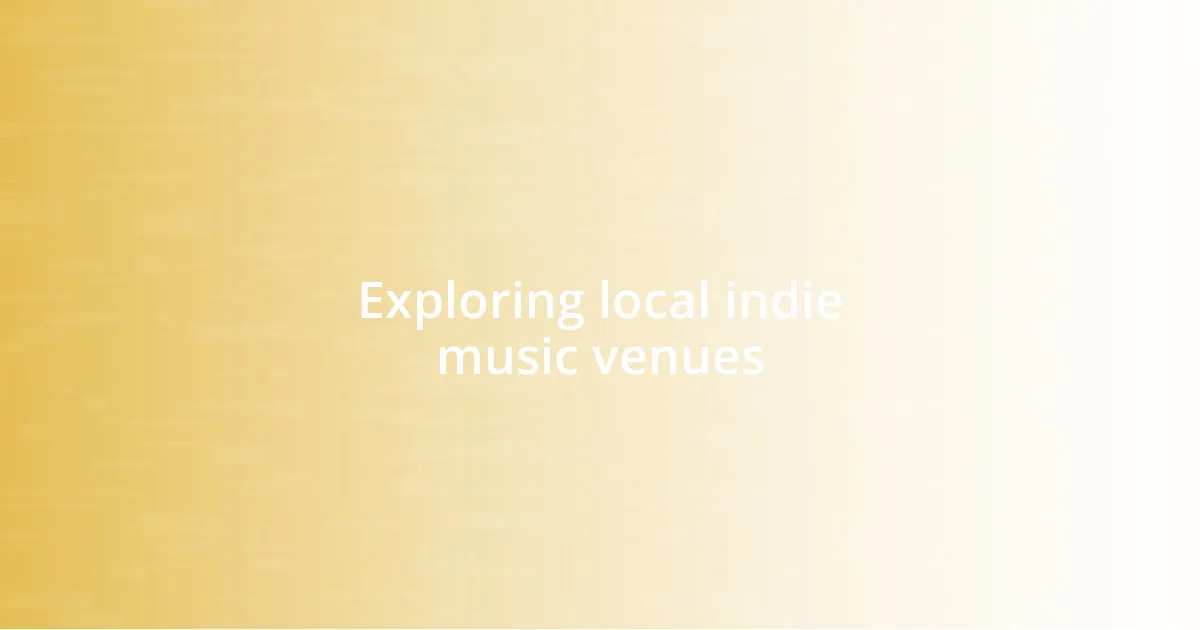
Exploring local indie music venues
Exploring local indie music venues is like stepping into a living, breathing art installation. I remember walking into a tiny shop transformed into a stage for an open mic night. The walls were adorned with posters from past performances, and the atmosphere buzzed with excitement. I felt a rush of nostalgia thinking about how these small venues often become the cradle for underground talent. Each performance was more than just music; it became a shared experience, resonating in every heart present.
One aspect that really defines these venues is their intimate environment. Unlike larger concert halls, where you’re just another face in the crowd, here, the artists engage directly with the audience. I once took a friend to a local venue where a band played acoustically, encouraging everyone to sit on the floor, creating a cozy vibe. It felt like we were part of a secret gathering, where the artist could share their story openly, and we all responded with genuine applause and laughter. Isn’t it incredible how a small space can foster such a profound connection?
Additionally, the diversity of these indie spaces can truly redefine your musical experience. From cafes with a few chairs to pop-up shows in old warehouses, each place has its own charm. I had a memorable experience at a converted church, where the acoustics transformed simple melodies into hauntingly beautiful soundscapes. I couldn’t help but feel transported, wondering if anyone else in the room felt the same way. These venues not only host music; they cultivate a cultural richness that celebrates individuality and fosters communal love for art.
| Venue Type | Unique Feature |
|---|---|
| Small Café | Cozy atmosphere; often features local artists |
| Converted Warehouse | Industrial vibe; great for larger crowds and raw sounds |
| Community Center | Accessible performances; promotes local talent and inclusivity |
| Church or Former Religious Space | Unique acoustics enhance the emotional experience of live music |
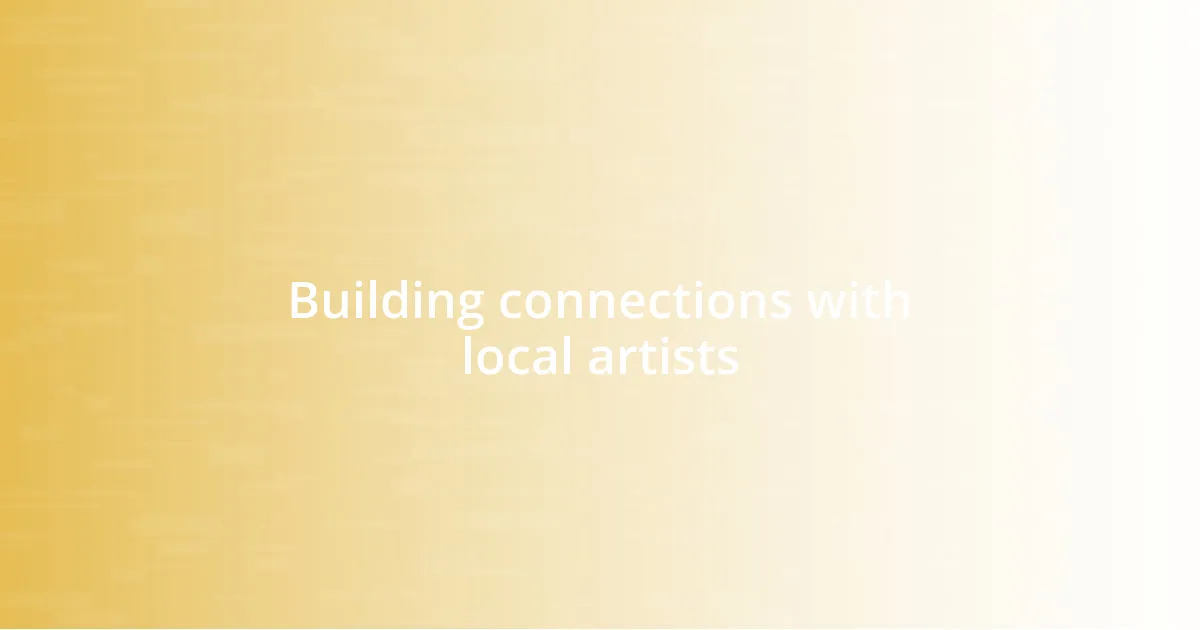
Building connections with local artists
Building connections with local artists often starts with simply showing up. I remember wandering into a quaint bookstore that hosted weekly jam sessions. Each week, familiar faces would appear, and I began to recognize the artists not just for their music but for the stories they shared over coffee. There’s something magical about that—watching a community of creatives unfold right in front of you.
I’ve found that fostering these relationships is as much about listening as it is about sharing. At one particular event, an aspiring singer-songwriter opened up about her struggles with self-doubt. As I quietly told her how her song impacted my journey, I could see her confidence grow. It’s incredible how a few kind words can solidify a bond, don’t you think? These connections often lead to collaborations and mutual support that enrich the music scene—making it feel more like a family than just an industry.
Networking doesn’t always have to be formal; sometimes, it’s as simple as exchanging contact information at the end of a show. After attending a local festival, I struck up a conversation with a drummer and ended up jamming with him and his band later that week. Those spontaneous moments often create the most memorable connections. When you let yourself be open to the experience, you never know what opportunities might unfold. It’s these interactions that breathe life into the indie scene, weaving a tapestry of relationships that feels both genuine and rewarding.
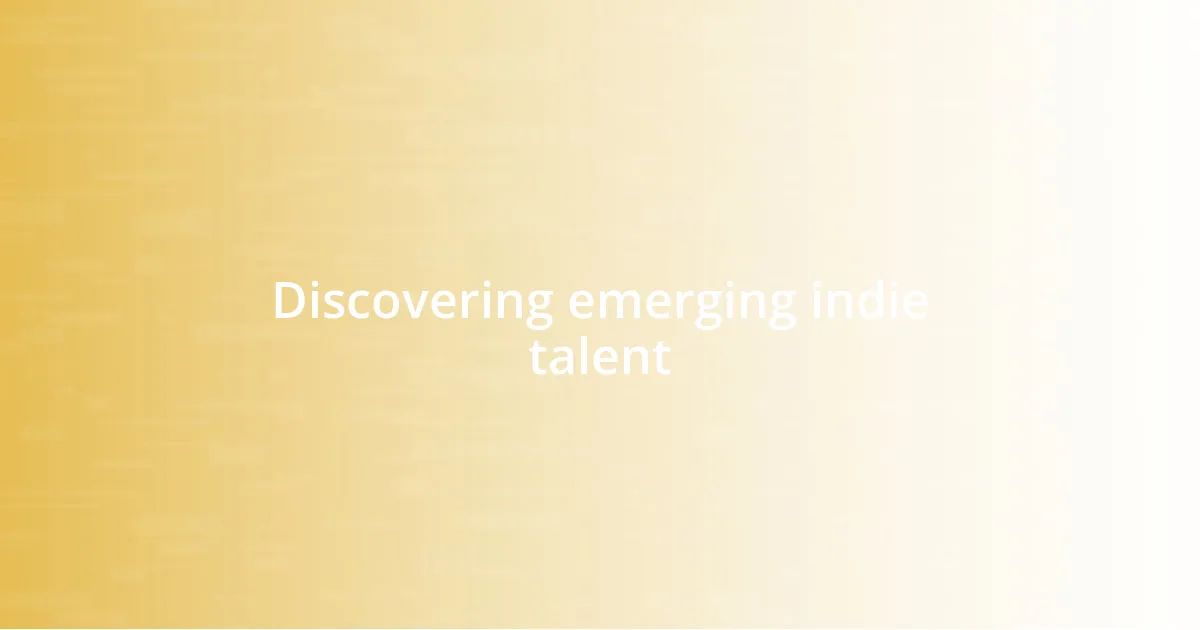
Discovering emerging indie talent
When it comes to discovering emerging indie talent, my go-to approach has always been to keep an ear to the ground. I recall one unforgettable night while attending a community fair. Amidst the laughter and chatter, a local band set up in a corner, completely unknown to me. Their raw sound swept me away, and it struck me how hidden gems can pop up in the most unexpected places. Have you ever stumbled upon a new favorite artist by chance? It’s those serendipitous moments that make the search for indie talent so thrilling.
I often find that social media has become an invaluable tool in uncovering fresh voices. One day, while scrolling through my feed, I came across a friend’s post featuring a new artist’s demo. Intrigued, I clicked on the link and found myself entranced by the haunting lyrics and unique melodies. The thrill of discovering someone on the cusp of greatness is contagious, and it drove me to reach out and share my love for their work. Isn’t it fascinating how a simple online interaction can lead to supporting the next wave of indie musicians?
Ultimately, attending showcases and listening parties can truly elevate your music discovery experience. I remember going to a local arts venue where a lineup of fresh acts performed. Each artist brought something different—one even played an instrument I had never seen before. The energy in the room felt electric, a palpable sense of camaraderie among the artists and audience. It made me wonder: what if everyone found that joy in supporting local talent? When we celebrate emerging artists, we enrich our communities and contribute to a vibrant musical ecosystem.
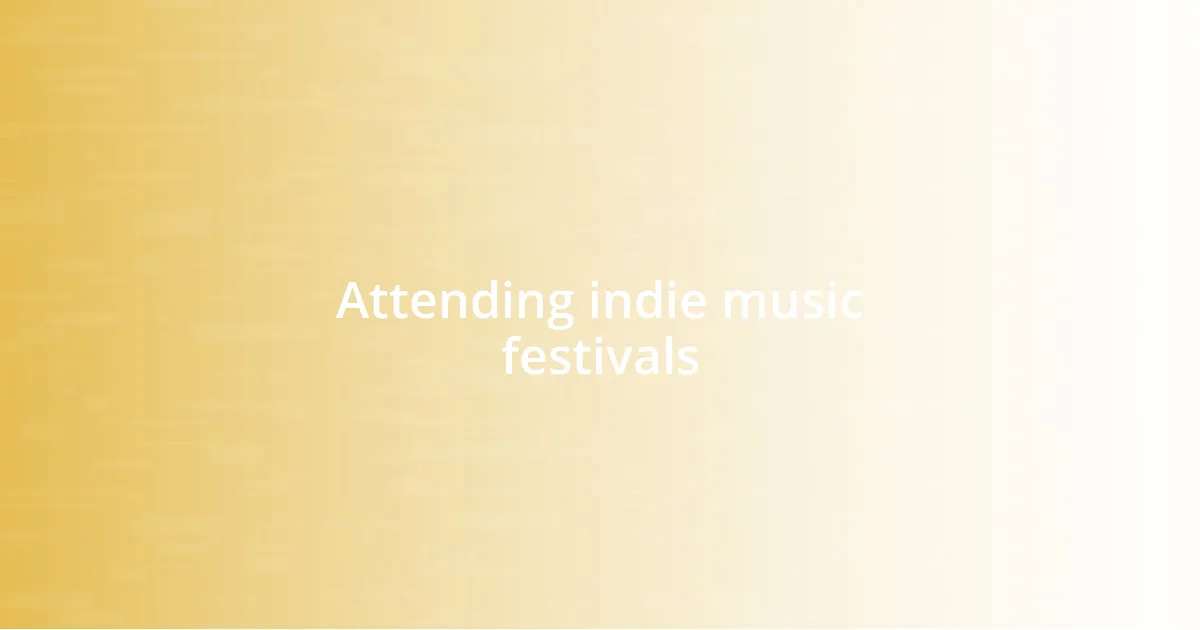
Attending indie music festivals
Attending indie music festivals is like stepping into a world where every note has a story to tell. I still remember my first festival experience, surrounded by colorful tents and a diverse crowd, all buzzing with anticipation. As the first band took the stage, I could feel the collective excitement in the air—it was electrifying. Don’t you love that moment when the music starts and everyone becomes part of something bigger than themselves?
What truly stands out about these festivals is the chance to immerse yourself in different genres and vibrant performances that you might not encounter elsewhere. I vividly recall a day filled with sunshine and laughter, where I stumbled upon an indie folk act that opened with a song so beautiful it gave me goosebumps. I found myself swaying along, sharing smiles with strangers who quickly felt like friends. Isn’t it amazing how music can bridge gaps between people in an instant?
The beauty of festivals lies not just in the music but in the connections we forge amidst the melodies. During one festival, I was lucky enough to grab a moment with a local artist, sharing our thoughts on the songs she performed. I remember her eyes lighting up as she spoke about her inspirations; it reminded me of the passion that fuels the indie scene. Those brief exchanges, filled with authenticity and shared enthusiasm, often become my most cherished memories. How often do we get to experience such genuine moments in our busy lives?
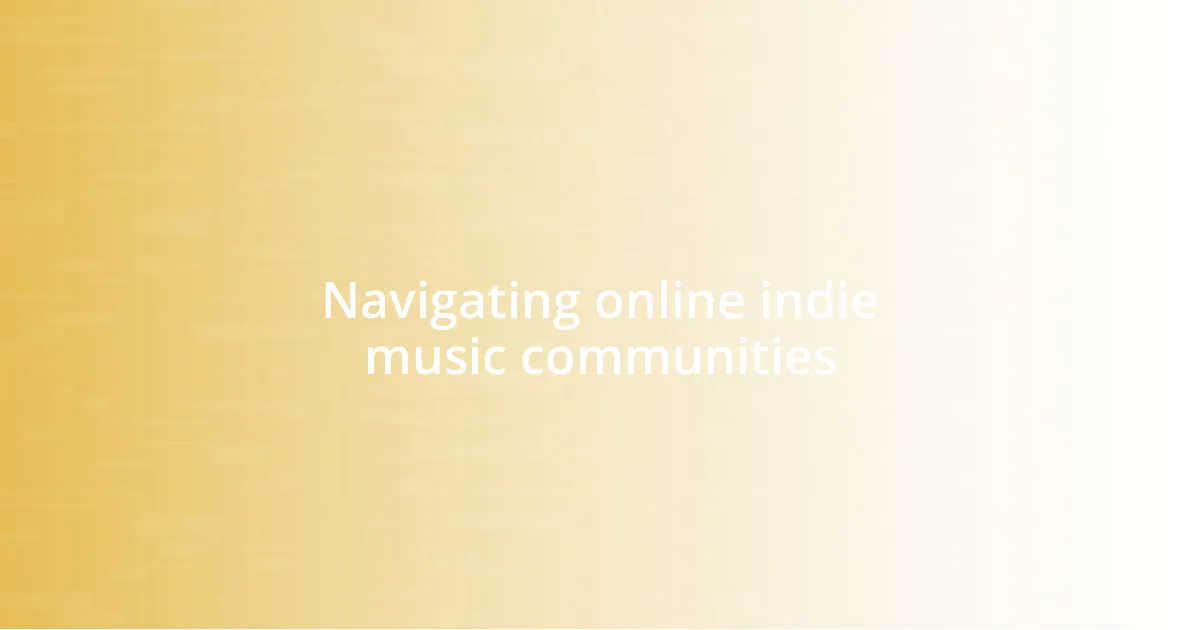
Navigating online indie music communities
Navigating online indie music communities offers an exhilarating yet sometimes overwhelming experience. I remember the first time I joined an indie music forum, full of vivid discussions and recommendations. At first, I felt a bit lost, but soon, the vibrant exchanges and shared passions opened up a world of unknown artists, and I found myself genuinely invested in the music tastes of others. Isn’t it incredible how a simple online platform can connect so many passionate fans and musicians?
Social media plays an essential role in fostering these communities. I once participated in a live-streamed Q&A session with an indie band I had just discovered. They were surprisingly down-to-earth, answering questions from fans with enthusiasm while promoting their latest album. The personal connection we made felt unique; I realized that engagement isn’t limited to just listening to music but extends to building relationships. How often do we get to interact directly with the creators we admire?
One experience that stands out is discovering a group where fans shared their favorite underrated tracks. At first, I was hesitant to post, unsure if my preferences fit in. But when I finally shared a recommendation, the outpouring of support and excitement made me feel like part of a tribe. Sharing in the joy of music makes the journey feel worthwhile. Have you felt the same rush of encouragement and acceptance among fellow music lovers? It’s moments like these that can spark friendships and enrich our understanding of music’s ever-evolving landscape.
